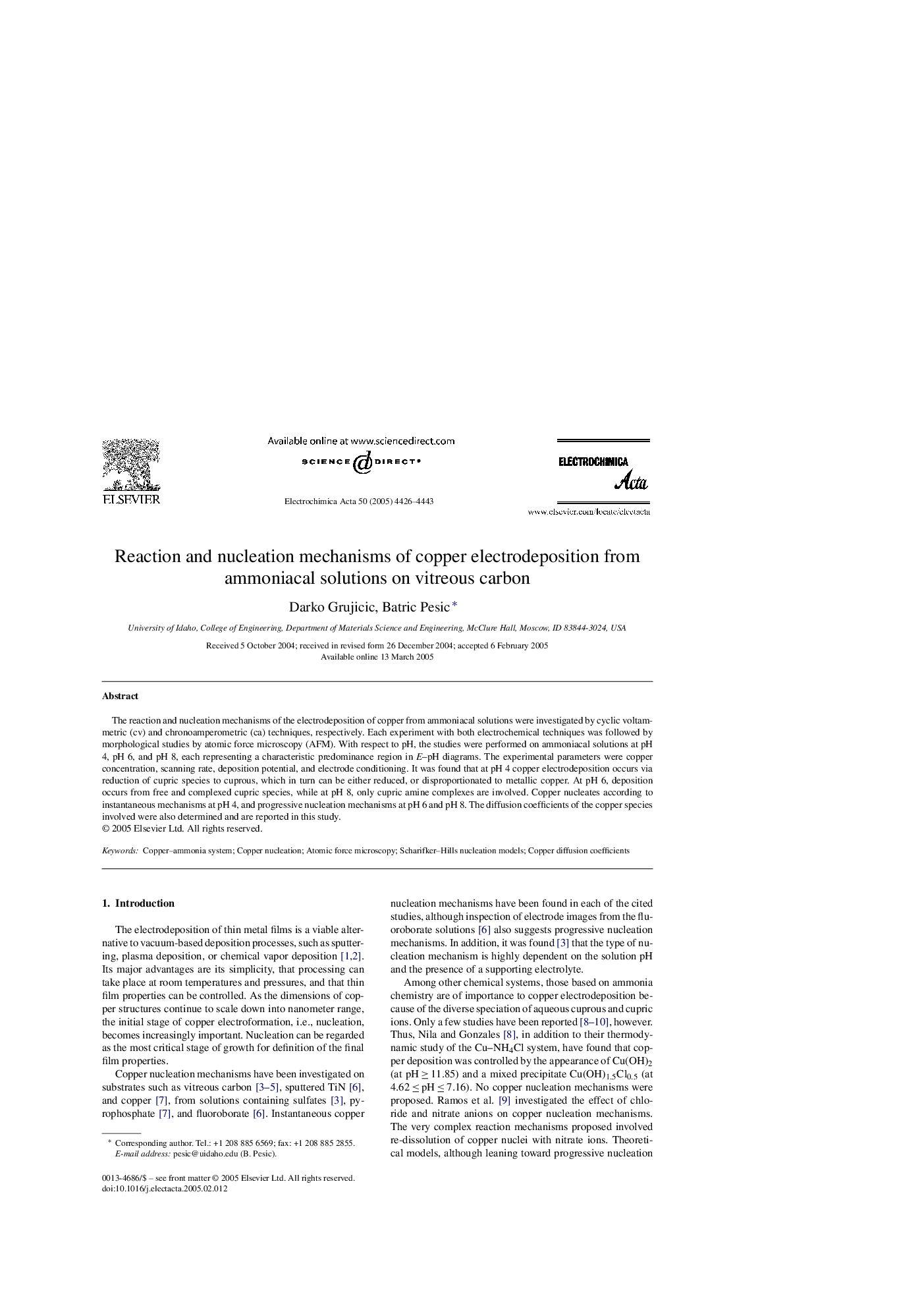| Article ID | Journal | Published Year | Pages | File Type |
|---|---|---|---|---|
| 196364 | Electrochimica Acta | 2005 | 18 Pages |
The reaction and nucleation mechanisms of the electrodeposition of copper from ammoniacal solutions were investigated by cyclic voltammetric (cv) and chronoamperometric (ca) techniques, respectively. Each experiment with both electrochemical techniques was followed by morphological studies by atomic force microscopy (AFM). With respect to pH, the studies were performed on ammoniacal solutions at pH 4, pH 6, and pH 8, each representing a characteristic predominance region in E–pH diagrams. The experimental parameters were copper concentration, scanning rate, deposition potential, and electrode conditioning. It was found that at pH 4 copper electrodeposition occurs via reduction of cupric species to cuprous, which in turn can be either reduced, or disproportionated to metallic copper. At pH 6, deposition occurs from free and complexed cupric species, while at pH 8, only cupric amine complexes are involved. Copper nucleates according to instantaneous mechanisms at pH 4, and progressive nucleation mechanisms at pH 6 and pH 8. The diffusion coefficients of the copper species involved were also determined and are reported in this study.
